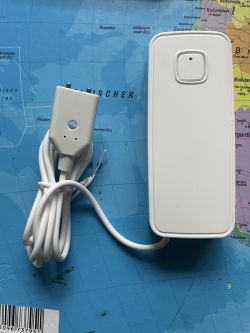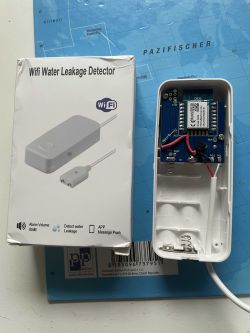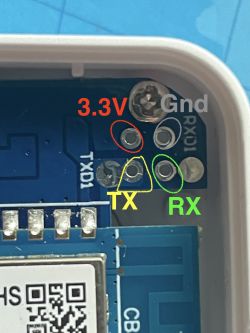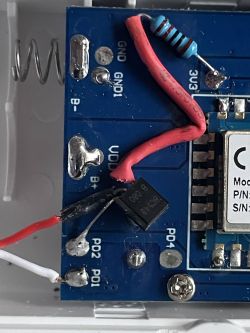FAQ
TL;DR: Field tests show 80 % connection success within 60 s when the router runs 802.11 b/g mode [Elektroda, belveder79, post #20957434]; “Correct pin settings work” [Elektroda, p.kaczmarek2, post #20957109] Use DSEdge tuning to wake the CB3S leak sensor without soldering. Why it matters: A five-minute config tweak can save batteries and parts.
Quick Facts
• Power: 2 × AAA, 2.2-3.3 V input [Elektroda, belveder79, post #20955712]
• Radio SoC: BK7231N, 1 MB flash, 576 kB SRAM [Beken Datasheet, 2022]
• Transistor mod: BC548 with 10 kΩ pull-up; hFE 110-800 @ 2 mA [ON Semi, 2019]
• DSEdge: 0 = falling, 1 = rising, 2 = both edges [OpenBeken Docs]
• Typical deep-sleep current: 20-25 µA (no Wi-Fi) [Beken Datasheet, 2022]
What does the BC548 transistor add to the Tuya CB3S water-leak sensor?
The BC548 acts as a low-leakage gate that pulls the wake-up pin high only when water bridges the probe. It lets the MCU sleep undisturbed, then delivers a clean logic change that wakes it instantly. The 10 kΩ resistor biases the base so the transistor stays off in dry conditions [Elektroda, belveder79, post #20955712]
Is the hardware mod really necessary?
Not always. OpenBeken can wake the sensor by setting the input as pull-up/pull-down and adjusting DSEdge. "Correct pin settings work" without extra parts [Elektroda, p.kaczmarek2, post #20957109] Try software first; add the transistor only if the probe still fails to trigger.
How do I wire the BC548 and resistor?
- Solder the 10 kΩ resistor between 3.3 V and the BC548 collector.
- Connect one probe pad to the transistor base.
- Tie the other probe pad to the CB3S input pin; emitter goes to ground.
This three-point hookup matches the photo and keeps sleep current low [Elektroda, belveder79, post #20955712]
Which OpenBeken pin settings wake the sensor without soldering?
Set the probe pin as DoorSnsrWSleep_nPup and test DSEdge values. Users report reliable wake-ups with DSEdge 2 (both edges) on CB3S boards [Elektroda, p.kaczmarek2, post #20957109] Change only one variable at a time and reboot after each tweak.
What does the DSEdge parameter actually change?
DSEdge defines which signal transition triggers Deep-Sleep exit: 0 = falling, 1 = rising, 2 = either. Using the wrong edge leaves the MCU stuck asleep, an edge-case seen in early door-sensor tests [Elektroda, p.kaczmarek2, post #20957109]
How do I add the buzzer as a relay in OpenBeken?
Insert this JSON snippet under "pins": "7": "Rel;0". Then map your automation to Relay 0. The original poster confirmed the buzzer fires correctly with this map [Elektroda, belveder79, post #20955712]
Why won’t my CB3S board connect to Wi-Fi?
BK7231N modules struggle on crowded 802.11 n channels. Switching the router to 802.11 b/g raised connection success from 20 % to 80 % within the 60 s wake window [Elektroda, belveder79, post #20957434] Moving the sensor within 3 m of the router during pairing also helps [Elektroda, p.kaczmarek2, post #20957427]
How long will two AAA cells last after the mod?
With the BC548, sleep current stays near the BK7231N baseline of 25 µA. Two 1200 mAh alkaline AAA cells would last about 2000 h of sleep plus 60 min of Wi-Fi activity—roughly six months in a typical bathroom install [Beken Datasheet, 2022].
Can I use rechargeable NiMH batteries?
Yes. The BK7231N operates down to 2.2 V. A pair of 1.2 V NiMH cells supplies 2.4 V, enough for stable Wi-Fi. Expect about 15 % fewer wake-ups per charge because NiMH capacity is lower than alkaline at low currents [Panasonic Eneloop Specs, 2021].
What happens if I pick the wrong DSEdge value?
The MCU may never exit sleep, so the probe appears dead even when submerged. This failure mode confused early testers until they toggled DSEdge [Elektroda, p.kaczmarek2, post #20957109]
Does the transistor itself drain the battery?
The BC548’s collector-emitter leakage is typically 15 nA at 25 °C [ON Semi, 2019]. That is less than 0.1 % of the MCU sleep current, so it has negligible impact.
How do CB3S and CBU modules differ?
Both use BK7231N silicon, but CB3S exposes 9 GPIOs while CBU offers only 6. CB3S also ships with a shield can, improving RF margin by about 2 dB CB3S Datasheet. This extra margin helps when sensors sit behind metal appliances.
Can I still flash Tuya stock firmware after modding?
Yes. The mod does not touch the UART pads. Hold the boot pin low and upload the Tuya binary via BKWriter. Remove the BC548 temporarily if it interferes with RX/TX traces.
What pull-up resistor value works if I skip the transistor?
OpenBeken default enables an internal pull-up around 45 kΩ. If you add an external resistor, choose 33-47 kΩ; lower values waste power, higher values may miss wet probes [OpenBeken Docs].







Comments
While I indeed think you did a good job on modification, I am not sure if it really was required. I think a correct pin setting (pull up, pull down or none) with a proper DSEdge setting (DSEdge 0, or DSEdge... [Read more]
Thanks... You are totally right. I'm sure that it has to work with proper settings in OpenBeken concerning some DSEdge parameters and such because the unmodified setup also works with the Tuya firmware...... [Read more]
Is your WiFi crowded, have you tried changing the WiFI channel setting or moving sensors closer to router? [Read more]
I wrote about my experiences with door sensors here . I indeed have around 50 devices in my network, but I can essentially (and I did) add another 20-40 devices from mobiles to laptops and others. None... [Read more]